Photo Diary: The Underground Cookery School
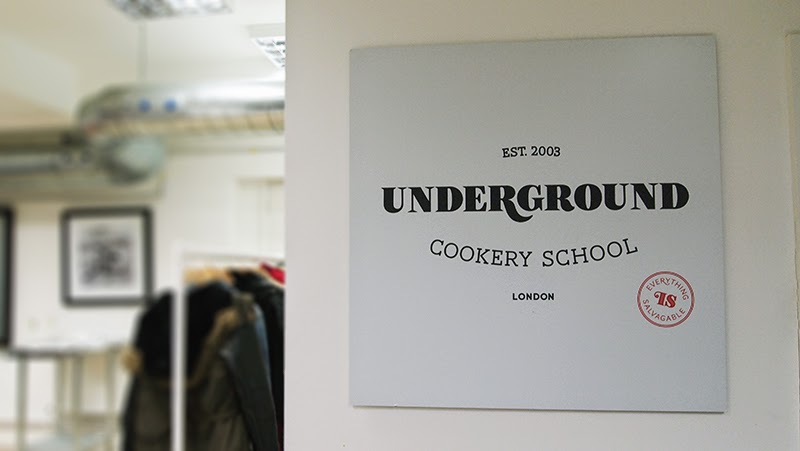

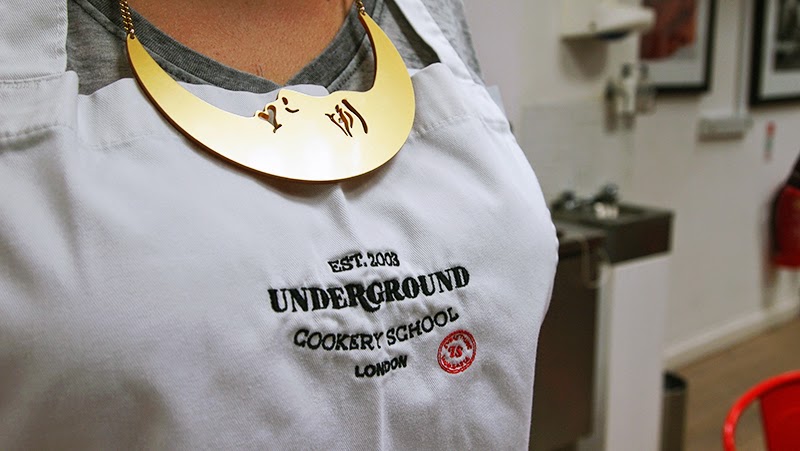
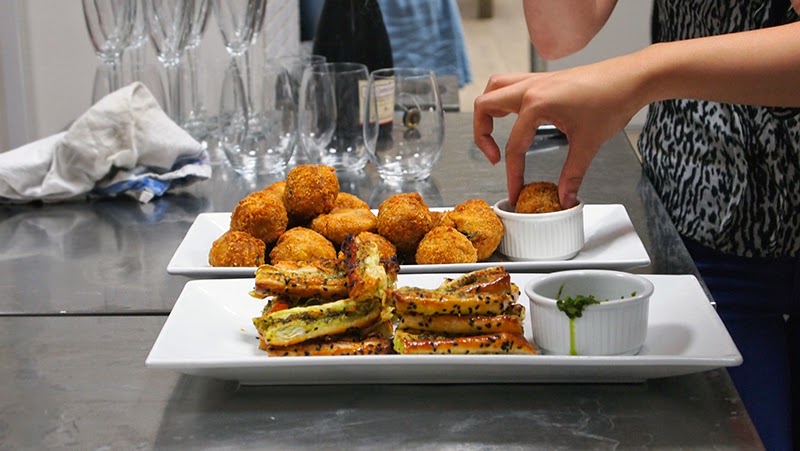
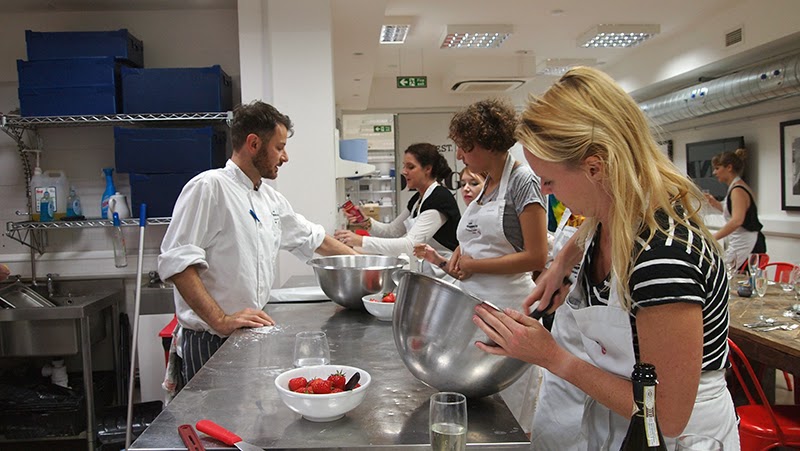
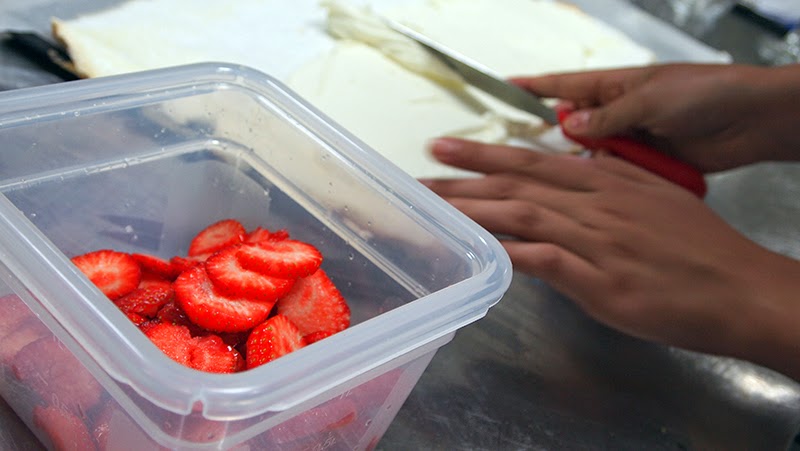

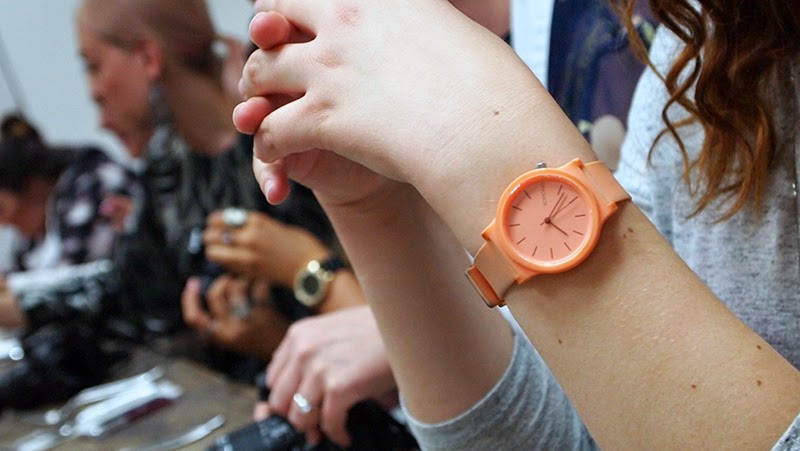
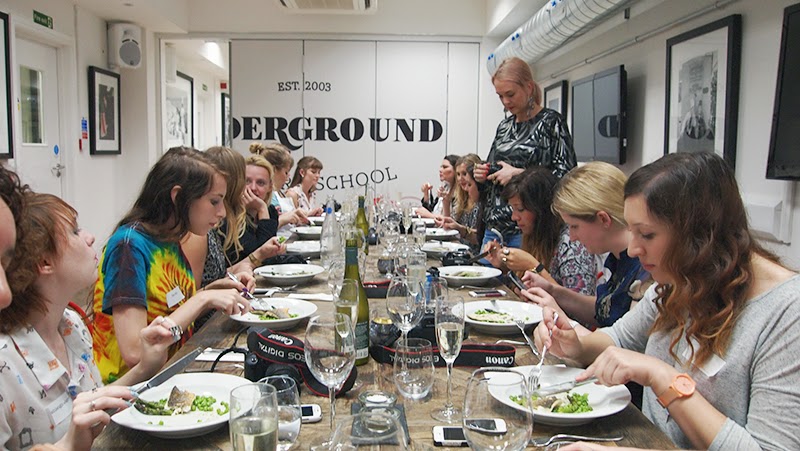


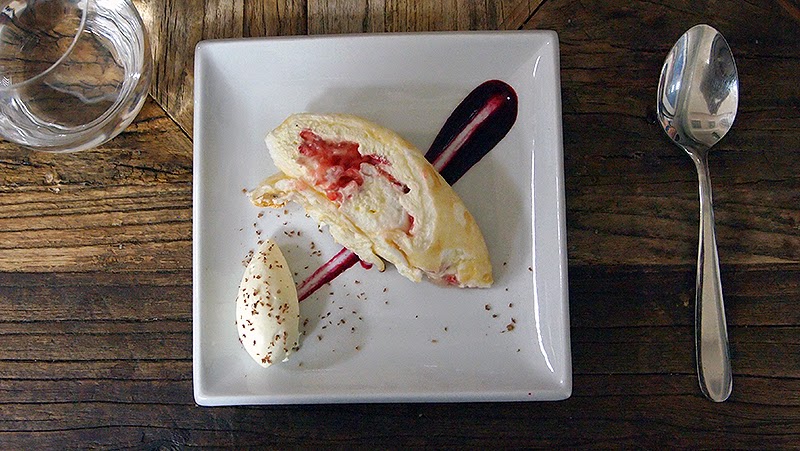
I’ve never been into the whole housewife lifestyle – cleaning and chores aren’t for me. Yet I’ve always enjoyed cooking and baking, which means that I cook 99% of the meals in our household. I do it purely for enjoyment, but of course there are times when I can’t be bothered, or I have run out of recipe ideas. Luckily for me I was contacted by The Underground Cookery School to attend one of their classes, where I would be cooking a 3-course meal (sea bream starter, chicken main, and roulade dessert) with some fellow bloggers and writers. I was eager to learn some new skills, and pick up a few recipes whilst I was at it.
The classes are literally held underground, in the basement of a rather unsuspecting building. Walking into the school I was impressed at the clean cut look of the kitchen and the large, inviting dining table. There were some familiar faces in attendance, and some lovely new ones also. We were all handed a glass of prosecco, canapés and an apron – a brief summary of what to expect from the night. After catching up with everyone we were handed our first task for the night – shelling broad beans. It may not sound very glamorous, but in the kitchen everyone has to chip in! Soon after we were split into two groups to start on the Strawberry Meringue Roulade. Luckily Ashleigh-Jayne was in my group – a self-confessed meringue connoisseur. After prepping our meringue we moved onto filleting our fish and preparing our chicken. Now I’d never done either of these things before, but as a sometimes meat-eater I think it’s important to be more hands on with your food, and understand how it is prepared. So I got stuck in, with a lot more enthusiasm than you’d expect from someone who was just handed a dead fish/whole chicken. I won’t go into details as I know some of my readers will be veggie/vegan etc. and I don’t want to cause any upset. After we’d washed our hands (very thoroughly) we went back to our meringue and prepared our cream, which we then smothered on top of the meringue and covered with strawberries, before carefully rolling to complete our roulade.
The cooking part of the class may have been fun, but the real entertainment came when we sat down to eat! My favourite dish of the night had to be the sea bream, with the roulade coming a close second. In fact they were all delicious! We were served by the chefs, and were given a complimentary wine to go with our courses. Conversation flowed, alongside the wine, thanks to the lovely company I shared. Food is fun, but it’s really made by the company you share it with. So a big shout-out goes to Lily, Charlie, Jesse, Lucy, Cassie and Plum! Also, thank you to Anneliese for hosting us, and the wonderful chefs of The Underground Cookery School. I had a night to remember, and I will certainly be trying out some of the skills I learnt, in my own kitchen!
Find out more at The Underground Cookery School.
Introducing Vivid Drinks: A Matcha a Day…
Now Open: Muji – Islington N1 Store, North London
Nuffnang’s 1st Birthday Party

On Saturday afternoon someone let a bunch of bloggers, including myself, lose on the rooftop of Netil House (Netil 360 to be exact). It’s ok, don’t worry, we were given plenty of food and drinks to keep us happy (and snapping photos). Yes, it was Nuffnang’s First Birthday celebrations and we were ready to party!
There were props a plenty, so me, Alex, Honey & Jesse took full advantage. In blogger terms that means a mini photo shoot! So we pranced and posed all over the rooftop with the colourful balloons Nuffnang had provided us. After we had exhausted ourselves and our cameras, we retired to the shade to sip on Pimms and chat with our fellow bloggers. It was so lovely to finally meet Marlene, and catch-up with Steph, Sarah, Sara, Holly, Angela…there’s just too many wonderful Nuffnangers to keep up with! Time flew by as we laughed and swapped anecdotes. We worked up quite the appetite during the day, but thankfully Club Mexicana were on hand to serve us delicious vegan tacos. I am a meat eater, but I adore vegetarian and vegan food, and I was not let down by these tacos. They were scrumptiously spicy, and left me wanting more! Still, after so much savoury food I had room for a little something sweet. Thankfully the amazing Victoria Yum was at Netil Market, which just so happened to be directly below us. So I told everyone about her and convinced them to come down with me and buy up all of her cupcakes!
I’ve wanted to be a member of Nuffnang ever since I found out my girl Cheesie was with them. Unfortunately at that time they were only in Asia. Naturally as soon as I found out they were in the UK I joined straight away! Nuffnang may have only been around in the UK for one year, but they are already pros at hosting events. I feel so relaxed with them, and I know that they would gladly help me (and the others) if I ever needed it. Not only that, but Jesse has already become a good friend of mine – she inspires me so much and I truly believe that we were meant to meet. So thank you Nuffnang, for inspiring me in blogging, helping me meet so many amazing people, and for hosting us at your first birthday party. May it be the first of many!




Recipe: Cauliflower Base Pizza (Gluten-Free)
Photo Diary: Rekorderlig ‘Apple & Guava’ Spirit of Summer Press Event
- Newer Posts
- 1
- …
- 31
- 32
- 33
- 34
- 35
- 36
- 37
- …
- 54
- Older Posts



















